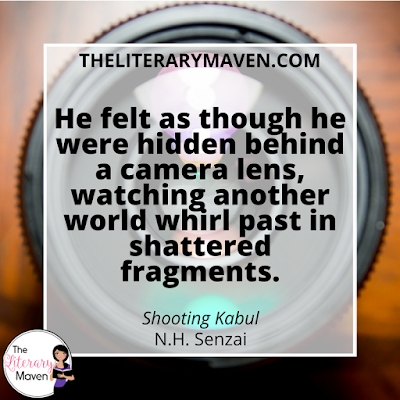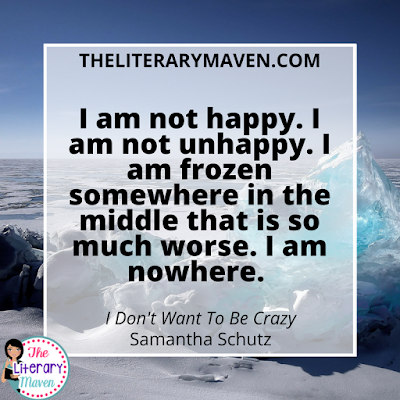Classic literature is considered classic for good reason; its characters are relatable and its themes are timeless. If you are making additions to or revising the reading list for your English Language Arts course, here's 10 classic literature titles that are still worth teaching in middle school and high school.
While perhaps the most well known piece of Holocaust literature, this literary nonfiction is also a coming of age tale. Elie's struggle with his relationship with his father, with his faith, and with his own identity are ones most teenagers face. Wiesel tells his story in simple language and remains fairly objective even in the most painful moments. To supplement my
, such as assigning them the identity of a real Holocaust victim and looking at how food (or lack of) was used as means of control in the ghettos and camps. As not to limit my students knowledge of the holocaust and genocide to a single experience, I also use excerpts of Night as part of a larger
.
The classic novel has a simple plot, but it is impossible not to connect with the characters' plights. During my
, I review many literary terms: conflict, setting, characterization, theme, symbolism, foreshadowing, mood, etc. Because it is short, it is a great choice if you have to do all of your reading in class or if you are trying to build up independent reading stamina with your students. I usually assign at home reading and then review key scenes with
in class. There are also several film versions, one old, two newer ones, and even a film of the play version of the novel. Watching one is the perfect opportunity to practice Common Core standard #7.
3.
The Pearl by John Steinbeck
The Pearl is a classic story about love, ambition, and hubris. The novella's accessible language and structure are unintimidating (it's only 96 pages!), but students can dig deep and work on skills like analyzing symbolism, characterization, and conflict. During our unit, my students make their own reading guides, construct
symbolism flipbooks, read nonfiction paired texts, and practice literary quote analysis. They make connections to income inequality in our own society and imagine ways that Steinbeck's story could have ended differently. They also enjoy creating skits reenacting dramatic scenes, which is always good for adding laughter to a serious book!
*Recommended by
Danielle @ Nouvelle ELA
4.
The Killer Angels by Michael Shaara
The Killer Angels is a fictitious account of the Battle of Gettysburg from the perspective of several generals from each side. It's an interesting book to teach because of the characterization of each of the generals, but also because Shaara's novel is controversial and has some problematic scenes. Older students can grapple with questions of author bias and deification of certain historical figures. This novel is also fantastic for inspiring creative writing. My students write a
letter home from a chosen general and imagine what "version of events" that character might share with a loved one. They also work on close reading, character sketches, and creating found poetry. I love to see the creativity that comes out of this unit.
5.
To Kill a Mockingbird by Harper Lee
To Kill a Mockingbird is a unique classic that can be taught from countless angles with a focus on any number of literary elements. The way Harper Lee portrays the events of Maycomb County through Scout’s innocent six-year-old eyes is brilliant. Every time I read this novel with students, we peel away deeper layers of meaning. Although the story itself is somber, we all walk away from the novel feeling a greater sense of empathy and compassion for our neighbors. While many students are bored with classic novels, most of my kids finish this one and actually recommend it to others. When I teach
To Kill a Mockingbird, my students always enjoy paired text activities. We dive into human rights articles and
Dr. Seuss’s The Sneetches, for instance. There's certainly no shortage of fiction and nonfiction texts with similar themes of prejudice, discrimination, acceptance, and love. I incorporate presentations and jigsaw research projects that make the novel relevant and memorable for teens. Because of its historical setting, this novel is also a perfect text to use as the basis of a cross-curricular study.
*Recommended by
The Reading & Writing Haven
6.
Lord of the Flies by William Golding
Lord of the Flies focuses on the true, dark, inner nature of humans. Without rules and society, who would we really be…savages? While the characters are young boys, William Golding has a way of making their experience on the island applicable and interesting to readers of all ages. Because the plot is similar to other stories and texts (the show
Survivor, the book
Hatchet, and
the movie Castaway just to name a few), it’s fun to make connections as we read. Plus, the author omits just enough details to create a suspenseful, eerie mood while forcing readers to make sense out of details and fill in the gaps of meaning for themselves. I’ve taught this novel with both seniors and sophomores, and at each level, I’ve implemented versions of a survivor simulation. The details change every year, but students enjoy the competition of voting people off their team in an effort to crown an ultimate survivor at the end of the novel. Many of the emotions the students feel throughout the simulation mirror those the characters experience in the book. The options for engaging students kinesthetically and creatively as well as for using STEM challenges are endless with this approach.
7.
Life of Pi by Yann Martel
Students love to imagine themselves in the waves with Pi as he sets out on a magical voyage. Along with Pi they also learn what it is to be fully human, to face challenges with humor, wisdom and originality. Students love this story because it draws on their unique skills, beliefs and imagination to fully explore escapades few have encountered, yet teens tend to crave. Their love for adventure weaves together with active solving problems skills through
100 neuro-related tasks that engage both sides of their brain through multiple intelligences responses as they read
Life of Pi.
*Recommended by
Ellen Weber - Brain Based Tasks for Growth Mindset
8.
Frankenstein by Mary Shelley
The cultural idea of Frankenstein permeates popular culture, from children's cartoons to parodies-- but it how well does it match up with the actual story? The opportunity to examine the original text and
compare to the cultural idea is a great tool for engaging students in this classic, if somewhat challenging, old text. There are also other ideas to explore with students, such judging based on appearances (great for personal writing) or how the story would have ended different if the female monster had been finished (a fun alternate ending project!) Imagery, setting, Gothic horror, and frame story are just some of the literary elements in this story, but students can also discuss what are the responsibilities of a creator (or parent) and whether the creature is good or evil (and if that changes in the story). For an added level of comparison, it's fun to include the 1931 Boris Karloff film, which is both short while still providing higher-level thinking and analysis writing.
*Recommended by
Ms. Dickson, High School English on a Shoestring Budget

9.
Animal Farm by George Orwell
Could George Orwell see into the future? His novel
Animal Farm is certainly relevant in today’s world where the line between fact and fiction is more difficult to distinguish than ever before. This classic explores pertinent themes including the use of language to deceive others, the inevitable corruption of absolute power, and the manipulation of the less educated. The novel can be taught as an animal fiction story or satirical allegory, thus, appealing to a range of student levels. Even the most reluctant readers will enjoy this imaginative tale narrated by talking animals. Instead of reading quizzes, I use a
trashketball game to review and assess students' learning.
*Recommended by
Kim, OCBeachTeacher
10.
The Lion, the Witch and the Wardrobe by C.S. Lewis
My aunt gave me a boxed set of
The Chronicles of Narnia when I was in 4th grade. I loved it! (And I still have it.) The fantasy aspects, the adventures, the realistic squabbling among Peter, Susan, Edmund and Lucy, the mystery of Aslan -- all appealed to me. So when
The Lion, the Witch and Wardrobe became part of the curriculum at my school, I was thrilled and designed a project to give my ELLs
practice in writing good descriptions. They didn't know what Turkish Delight was and since it's an important part of the novel, I bought some for them to taste. After they each ate a piece, the students brainstormed adjectives to describe the candy. From the list that was generated, they picked three adjectives and used a graphic organizer to write details about each one. Then the students turned the information on their organizers into paragraphs about Turkish Delight. They followed up by "publishing" their paragraphs as podcasts, which they really enjoyed creating.
*Recommended by
Susan at The ESL Nexus



















